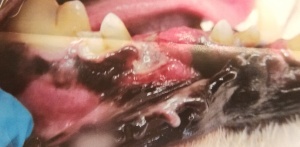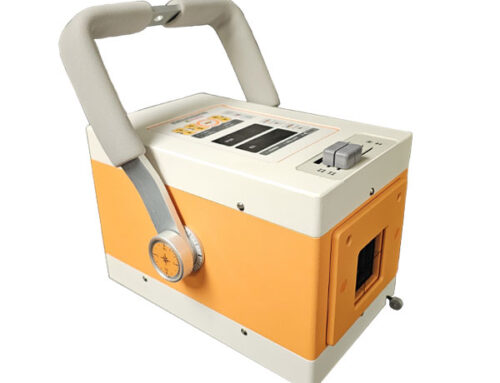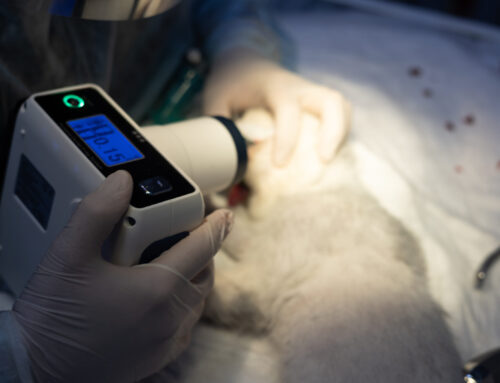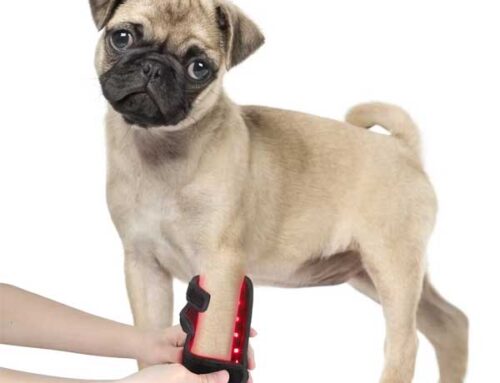
Photos of Max, courtesy of Lynne M. Gardiner
What are oral tumors?
According to the American Animal Hospital Association, oral tumors are the fourth most common type of tumor in dogs. These growths come up from both soft tissue and bony structures within the mouth and, less frequently, the tongue and tonsils. They can be benign and cured surgically, or malignant and require more aggressive therapy including chemotherapy and/or radiation surgery. General categories of tumors include the epulides (fibromatous, ossifying, and acanthomatous), locally invasive malignant tumors (fibrosarcoma, soft tissue sarcoma, and squamous cell carcinoma), and malignant tumors that have a higher rate of spreading (metastasis) to other parts of the body (melanoma, osteosarcoma).

Diagnosis
Depending on size of the mass and its location, a fine needle aspirate or wedge (incisional) biopsy may be performed under general anesthesia. Sometimes these biopsy tests are inconclusive or less-than accurate; only after the entire tumor is removed and studied by a pathologist can a final diagnosis be made. Chest X-rays are used to identify any visible spread of the cancer; unfortunately, microscopic spread of the tumor to other organs cannot be detected with this examination. X-rays of the tumor site may help determine if the tumor has invaded into the bone. A CT scan of the jaw may be recommended to additionally evaluate the extent of the tumor. Enlarged lymph nodes will be checked for spread of cancer via biopsy. A complete blood count, biochemical profile and urinalysis are performed before surgery to check internal organ health.
Treatment
The goal of surgery is to remove the entire tumor with the likelihood of treatment achieving a cure and the fitness of the patient (curative intent). Removal of any part of the upper jawbone is termed a maxillectomy. Removal of any part of the lower jawbone is termed a mandibulectomy. The amount of the jaw that is removed is dependent on the size and location of the tumor. There can be instances where massive amounts of the upper jawbone need to be removed or when one side of the lower jaw is completely removed. Despite removing such a large portion of the jaw, the cosmetic outcome is very good in the majority of cases.
If your buddy has a tumor that tends to spread (metastasize), chemotherapy will be recommended and administered every third week for a total of five treatments (ncbi.gov). Unlike humans, most dogs do not lose their hair and generally suffer only mild side effects, which may include transient loss of appetite and vomiting. Certain types of tumors cannot be cured with surgery alone; therefore radiation therapy is needed to help delay the redevelopment of remaining cancer cells in the mouth. As a rule radiation is administered daily for 5 days per week (2 rest days) until 18 to 21 treatments have been completed.
Results
The prognosis for your companion is dependent on size, location and biopsy results of the tumor. In general, tumors located on the front part of the jaw have a better prognosis. The oncologist will discuss your dog’s prognosis and the need, if any, for additional treatments after the final biopsy results are available.
Care Management
Surgery—will result in soreness and may result in difficulty chewing as compensation for the loss of teeth and bone. Soft food is recommended at the start, and the owner may need to hand feed small amounts.
Chemotherapy– injected into the tumor can also cause the mouth to be sore and possibly bleed. Soft food and/or a special diet may be recommended. NOTE: Chemotherapy often does not have a curative effect, but it may slow the growth of the tumor and help to make your dog more comfortable (National Canine Cancer Association).
The content is not medical advise, nor is it intended to be a substitute for veterinary treatment or care. First, consult with your veterinarian before use.





